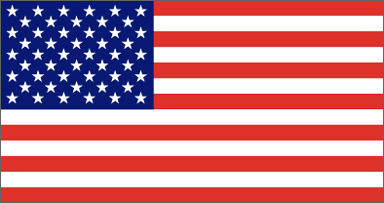
MARTINA'S WORLD TRIP
UNITED STATES: September 26 - December 3, 2004


Your Dictionary
(Übersetzungshilfe)
 |
MARTINA'S WORLD TRIP UNITED STATES: September 26 - December 3, 2004 |
|||||||
 |
||||||||
 |
Your Dictionary
(Übersetzungshilfe) |
|||||||
| Thursday, October 21st, 2004 - Fall Foliage in New England | |||||||
| The region known as “New England” comprises six states in the north-eastern corner of the USA (Massachusetts, Rhode Island, Connecticut, Vermont, New Hampshire and Maine) and is famous for its history (as cradle of the United States), its top universities (including Harvard, Yale, Dartmouth and MIT), numerous outdoor activities (hiking, biking, rafting, kayaking, sailing) and – of course – for its Indian Summer. According to some online sources, Indian Summer can be defined as “any spell of warm, quiet, hazy weather that may occur in October or even early November (...) Its characteristics are a tranquil atmosphere and general smokiness”. Personally, I’ve always associated Indian Summer with the autumn season when the leaves change their colour (called “fall foliage”). Although this natural phenomenon is obviously not restricted to the American continent, it is the area around New England and Southeast Canada that is most famous for its explosion of colours that bursts over the landscape and its vast forests during the fall season - reason enough for me to go and see it with my own eyes. As it turned out, Aaron was born in New England and still has a lot of family in Massachusetts, so he decided to take a few days off and we went up north together. He could show me where he is from and we took the occasion to visit some of his relatives. Not only did this have a very welcome effect on our travel costs for accommodation, but it also gave a somewhat personal note to the whole New England experience. We left Pensacola around noon and took a 90-minutes flight to Charlotte, North Carolina, followed by a 2-hour connection to Boston, where we landed around 7 pm local time (= one hour ahead of Pensacola). We first picked up our rental car, a small aubergine-coloured Ford Focus, and followed highway 93 up north. After an hour drive, we reached a small town called Dracut on the northern border of Massachusetts. We spent the night at the house of Aaron’s uncle, a gorgeous home not far away from Gagnon Drive (a little insider for those who know). This evening we still visited one of Aaron’s cousins and her family who live in a beautiful villa next door. We stayed for some time chatting over a glass of wine (them, not me of course) and admired their home cinema in the basement. When we finally went to bed it was already far past midnight. While doing some research on New England, I learned a lot about American history. For those of you who are interested or would like to refresh what you may have learned in school, here is a summary of New England’s important role in the formation of the United States of America: It was the second wave of European mariners (after Columbus and others in the late 15th century) that explored the coast from what’s nowadays Maine to Rhode Island in the early 1600s and opened the area to colonisation. In 1614, English explorer Captain John Smith (1580 – 1631) christened the land “New England”. By the way, this very same John Smith had been captured by the native Powhatan tribe back in 1607, but was saved by the Chief’s legendary daughter Pocahontas after he had been condemned to death. Unfortunately, this is not a romantic love story, though, as Pocahontas was only 12 years old at that time. She eventually married another English settler but died of smallpox at the age of only 23. – And I thought Pocahontas was a mere Disney character! With the landing of the Pilgrims at Plymouth (Southern Massachusetts) in the summer of 1620, European settlement began to thrive, and the European population grew rapidly from the 1650s to the 1750s. Though independently minded New Englanders still considered themselves subject of the British crown, they had no representation in the British Parliament and increasingly disapproved the tax policy imposed on the colonies by King George III. One of the most controversial charges was passed by the British Parliament in March 1765 and is known as the ‘Stamp Act’, which was supposed to offset the high costs of the British military organisation in America. Under the Stamp Act, all printed materials were taxed, including newspapers, pamphlets, legal documents, licenses, dice and playing cards. In their 150 years of history, this was the first direct tax on American colonies, which obligated the colonists to pay tax not to their own local legislatures but directly to England. The Americans quickly united in opposition, led by the most influential segments of colonial society: lawyers, publishers, land owners, ship builders and merchants, who were most affected by the Act. Also passed in March 1765, was the ‘Quartering Act’, which required colonists to house British troops and supply them with food. In the following two years, colonists opposed the law, using violence and intimidation against British troops, royal governors and other representatives of the English crown to force them to cancel the disputed Acts. A popular underground organisation, the “Sons of Liberty”, was founded in a number of colonial towns in July 1765. They quickly established a network and promoted resistance against Britain governance across several colonies. Although the Stamp Act was repealed by King George III in March 1766, on the same day the English Parliament made a clear statement about who was in charge of ruling the colonies by passing the ‘Declaratory Act’ stating that the British government had total power to legislate any laws governing the American colonies in all cases whatsoever. Colonists continued to refuse to comply with the Quartering Act and to seek independent governance when another controversial law caused an uproar: In June 1767, the ‘Townshend Revenue Act’ passed the English Parliament, imposing a new series of taxes on the colonists to offset the costs of administering and protecting the American colonies. Items taxed included imports such as paper, tea, glass, and paints, leading to a boycott of English luxury items. Violent opposition against the British law enforcement continued until the end of the decade and escalated in the “Boston Massacre” when a rowdy mob of colonists harassed British soldiers who accidentally opened fire and shot their muskets point-blank into the crowd, killing five and injuring six people on March 5th, 1770. It was only after this tragic event that the Townshend Act was repealed by the British. All duties on imports into the colonies were eliminated except for tea. Besides, the Quartering Act was not renewed. Over the following three years, activists united in different towns and committees to continue their fight for the right to self-rule the American colonies. On December 16th, 1773, the famous “Boston Tea Party” (when colonists disguised as Mohawk Indians and boarded three British ships to dump all 342 containers of taxable tea into the harbour of Boston) set the stage for the battles between British troops and colonial militia at Lexington and Concord, Massachusetts, in April 1775, which began the American Revolution. The Revolutionary War culminated in 13 American colonies proclaiming their independence in the Declaration of Independence signed on July 4th, 1776, and lasted until the Treaty of Paris was signed between Great Britain and the United States on Sep 3rd, 1783. (An account of the details of the American Revolution can be found on the following web site: www.historyplace.com/unitedstates/revolution - have a look, I didn’t know that history could be so interesting!) When the Revolutionary War ended, New England’s mariners and merchants, free from Great Britain’s restrictions, quickly built up the young nation’s trade in fishing, whaling and commerce. Over the years, the settlement and cultivation of the Great Plains (= the centrepiece of today’s United States) had made farming New England’s rocky soil less profitable anyway and when the first water-powered cotton-spinning mill of North America was opened in 1793, clothing, shoes and machinery turned into another backbone of New England’s economy. After the Civil War (1861-1865), however, with the emancipation of slaves and the invention of steam power, many New England industries moved south to take advantage of cheaper labour. Today, education, textiles, electronics, biotechnology, publishing and tourism are the mainstays of the economy in the North East of the USA. |
|||||||